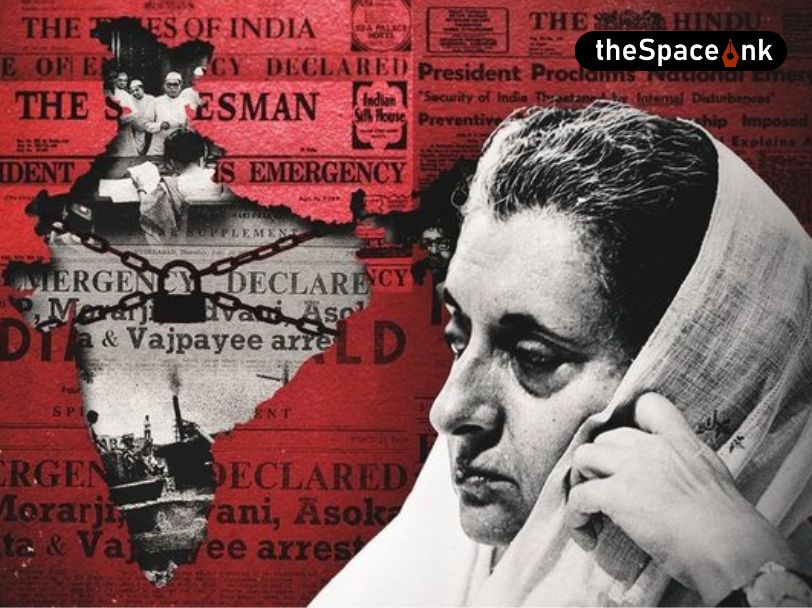The Indian economy contracted and the depression that followed led to a drop in aggregate demand, the government resorted to borrowings to increase effective demand and to generate extra income in society. Public debt is the total amount including total liabilities borrowed by the government to meet its development goals. It is the only feasible option to finance government expenditure and other government projects. The national debt affects everyone. This reduces the total tax revenue available to spend on other governmental services because more tax revenue will have to be paid as interest on national debt. Over time this will cause people to pay more for goods and services resulting in inflation. National debt, however, is not necessarily a burden on future generations if it is used to finance investment in the economy. Therein lies the path to be adhered to for the future.
If we Compare the rupee earnings and outflows of the last budget to this one, we find, in a largely contracted economy, all shares of taxes and earnings have decreased, other than union excise duties. So, to make up the shortfall and when the government can not repay its debt funds are raised in the form of bonds.
The following chart upholds the crisis which is demonstrated by the fact that government borrowing has gone up by 16 % and interest payment by 2% only. The predicament will be exposed over time say 5 years when interest outflow will increase over time.
Lorem ipsum dolor sit amet, consectetur adipiscing elit. Ut elit tellus, luctus nec ullamcorper mattis, pulvinar dapibus leo.
upee Comes From
Heads of Earnings | Last Budget | Present Budget | Trend |
Income Tax | 17 | 14 | Decreased |
Corporation Tax | 18 | 13 | Decreased |
Customs | 4 | 3 | Decreased |
GST | 18 | 15 | Decreased |
Non-Tax Revenue | 10 | 6 | Decreased |
Non-Debt Capital Receipts | 6 | 5 | Decreased |
Borrowings and Other Liabilities | 20 | 36 | Increased |
Union Excise Duties | 7 | 8 | Increased |
Rupee Goes To
Heads of Expenditures | Last Budget | Present Budget | Trend |
Pensions | 6 | 5 | Decreased |
States’ Share Taxes, Duties | 20 | 16 | Decreased |
Central Sector Schemes | 13 | 9 | Decreased |
Other Expenditure | 10 | 10 | Same |
Defence | 8 | 8 | Same |
Finance Commission and Other Transfers | 10 | 10 | Same |
Centrally Sponsored Schemes | 9 | 9 | Same |
Subsidies | 6 | 8 | Increased |
Interest Payments | 18 | 20 | Increased |
On the inflows front to States’ share of taxes and duties and Central sector schemes has gone down substantially, requiring Rs. 118452 crores as Revenue Deposit grant to 17 states in 2021-22. The fiscal position allows a normal ceiling of net borrowing for the states at 4% of GSDP for 2021-22 and additional borrowing ceiling of 0.5% of GSDP subject to conditions. The share of pension has fallen too requiring relief for senior citizens which came in the form of exemption from filing income tax returns for senior citizens (75 years and above) who only have pension and interest income. The paying bank will deduct the necessary tax on their income. This clause could actually be extended to all senior citizens. The states have suffered owing to reduced allocation of their shares in national expenditure by 4%. Naturally, the contraction of the economy has affected all and sundry.
The fiscal deficit increased from 4.6% to 9.5% in a revised estimate 2020-21. A point to note, is that, there are three estimates for every budget: budget estimates, revised estimates and actual estimates. The figures obtained are truly available till December end, so the presented budget is more a guesstimate.
For example, Total receipts (minus borrowings) = Rs. 16 Lakh Crores.
Official A/C till December = Rs. 11 Lakh Crores
Next 3 months (guesstimates) = Rs. 5 Lakh Crores (42% increase)
Total Spending = Rs. 34.5 lakh Crores
Official A/C till December = Rs. 22.8 Lakh Crores
Next 3 months (guesstimates) = Rs. 11.7 Lakh Crores (34% increase)
While the guesstimates envisage an increase in expenditure by 34% in next three months the expectations that revenue will increase by 42% is indeed, surprising. If this was to increase at the same rate, then the fiscal deficit will likely increase to 10.5%. What, however, untenable by prudent fiscal norms is the huge increase in revenue deficit where revenue receipts in 2020-21 revised estimate is 15.5 Lakh crores and revenue expenditure is 30 Lakh crores, which is almost double of receipts. Surely, the ministry can think of stringent measures possibly wage freeze to reduce this gap. The entire country need not suffer to see that public servants remain unscathed when they are jobless and face huge hardship including no dearness allowance.
Figures can be misleading. The expenditure on wellbeing is targeted to increase from 94 thousand crore to 2.23 Lakh crores. This is a 137% increase, but set against 22.3 Lakh crores (GDP). This is merely a 1% increase in GDP. I do expect the government will spend several times more in ensuing years. The allocation for COVID 19 vaccines is 350 billion rupees. There are plans to set up 2 regional institutes in virology; operationalisation of 17 new public sector units ;17000 rural and 11000 urban health centres.; there are plans to strengthen the National Centre for Disease Control and plans for expansion of integrated health databases for all states. Health spending will crores over rupees 35500 crores 2020-21 revised estimates. Jal Jeevan Mission has increased 3-fold.
The areas of concern are the expenditure on MGNREGA is reduced by 40000 crores and though transfer of Rs.6000 crores annually has remained the same for land owning farmers. Samman Nidhi Scheme has reduced its outlay from 75000 crores to 65000 crores. The idea is the newly introduced farmers’ bill will more than adequately compensate the farm sector. The government has committed to the welfare of farmers and to improve agricultural infrastructure. It has a proposal to add 1000 more mandis to e-NAM; to up rural infrastructure development fund corpus to 400 billion rupees; to make agricultural infrastructure fund available to APMCs; to develop 5 major fishing hubs; to set up multipurpose seaweed park in Tamilnadu; to allocate 10 billion rupees for tea workers in Assam, Bengal.
On indirect taxes, there has been rationalisation of customs duty structure eliminating outdated exemptions. The support to MSMEs through reduction of customs duty on sum alloy, iron and steel product by 7.5%; The customs duty on cotton has increased by 10%; while copper scraps customs duty was cut by 2% there will be a rationalisation of custom duty on gold and silver; there will be an increase in duty on solar inverters by 20% to propose domestic production through customs duty on solar lanterns is cut to 5%. agricultural infrastructure and development cess has been introduced on a small number of items and 400 old customs duty exemptions have been reviewed. The government will take all possible measures to smoothen the GST process which has steadily been increasing since October 2020 by more than 1 Lakh crores per month. The states are getting more revenues on this account and MSME s are receiving faster payments for their products. It is anticipated that petrol and diesel prices will be brought under GST which will address the issue of rising prices and inflationary impact of these items.
The proposal of highway projects in Tamil Nadu, Assam, Kerala and West Bengal and a record Rs.1.10 Lakh Crores outlay for railways of which Rs.1.7 Lakh Crore is capital expenditure in addition to Rs.18000 Crore provided for public buses will certainly spur economic growth. Such investment on social overhead capital has an inherent inflationary potential, so the key lies in project implementation without delays. Meanwhile, markets are reacting positively to union budget 2021 with Sensex surging forward.
Dr. Suman K. Mukerjee is an economist and highly respected academician. He has more than 46 years of teaching and research experience in India and abroad which includes institutions like XLRI, IISWBM, St. Xaviers’ College, Kolkata, IIT Delhi etc. He has also been a columnist and member of several advisory boards of the Indian Government as well as the West Bengal Government. He is an alumnus of St. Xavier’s College, Kolkata, St. Stephen’s College and Delhi School of Economics. Presently he is a member of State Advisory Board on Education, Government of West Bengal, Advisory Board, Chairman International Marketing and Business Community, Federation of Small and Medium Industries (FOSMI), West Bengal, Economics Sub Committee BCC&I, MCC&I, ASSOCHAM, CII(ER). He is also a life member & general council member of Ceners-k, an independent thinking body of researchers on International Development.







